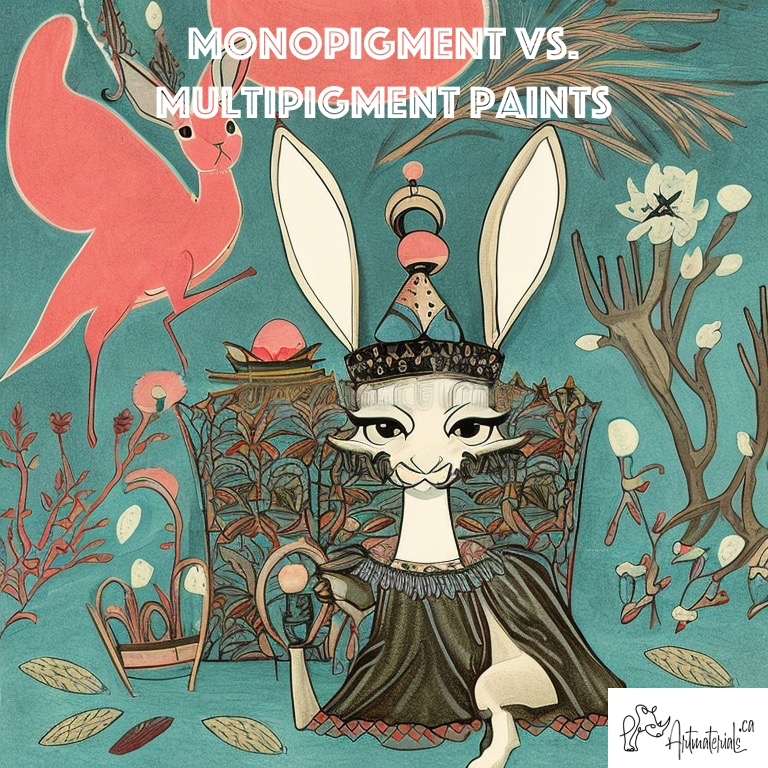There are many debates regarding what’re better mono-pigment or multi-pigment paints. As all artists are different and hence have different preferences it’s hard to say what is better. From the chemical point of view, these questions can be answered if we have full information regarding each specific paint colour’s ingredients. As this is impossible, let me share some ideas and approaches to Mono-pigment vs. Multi-pigment paints.
Benefits of mono-pigment paints
Generally speaking, mono-pigment paints seem to have a better reputation than mixed pigments. The main benefits include:
- More predictable results in mixing
- No pigment separation
- Even consistency
- Higher pigment load
- More stable colours
However, the choice is not that straightforward. Things were easier to understand a century ago, when pigments were mostly mineral or natural, with well-known properties and composition. Now, heavy-metal pigments, such as lead, cobalt, cadmium, nickel and others are getting substituted with manufactured pigments. More and more synthetic pigments come to the market and their properties are still being tested.
Mixing Organic and Inorganic Pigments
There is no perfect solution for mixing colours, and every mixture of pigments has its own pros and cons. When it’s about mineral and inorganic pigments, I’d say mono-pigment colours are better as they are more predictable. Ideally, mineral pigments have no fillers or extenders, so having pure colours is much more beneficial. All metal oxide pigments are like that.
For example, iron oxide colours depending on their place of extraction may have different impurities that bring interesting hues and shades. Pre-mixed colours reduce the range of possible experiments.
However, when it’s about synthetic organic pigments, things get different. Since all organic pigments need a base, different tubes may have different combinations of bases and fillers. It can be kaoline, chalk, marble dust, barium sulphate, aluminum sulphate, silica, mica, titanium white etc. If we want to make orange from yellow and red, we may not be able to, because our paints may contain fillers in various proportions. As a result, mixing colours on a palette is less predictable and brings more struggle.
Also, we should take into consideration that the mixing process itself for paint-making and for painting is different. Manufacturers mix pigments first and then add the base and fillers. Artists mix together the products.
Organic pigments are super-fine. So, mixing them at the manufacturing stage allows them to get homogenous mixtures and even colouration. When artist mix ready paints, at the micro level, mixed orange, for example, is still yellow and red as organic pigments don’t interact with each other unless literally rubbed into a base.
For mineral paints, having mono-pigment colours is much better. For orange, it’s better to use PO colours than to mix red and yellow. The reason is the same, at the micro-level red+yellow for mineral pigments is still red and yellow.
What To Avoid
And for any colours, whether organic or inorganic, I’d suggest avoiding paints that contain white in mixtures (unless we’re looking for hues, such as flesh colours, for example). If yellow has white and red has white, mixing them together will give peach colour or muted orange, but never bright orange.














